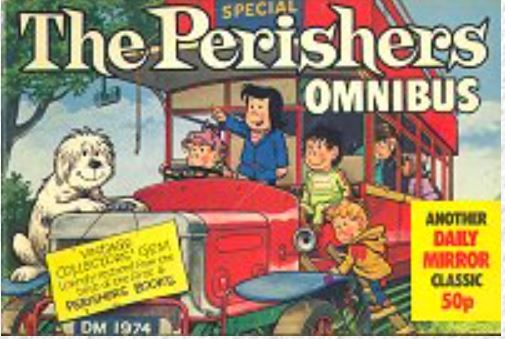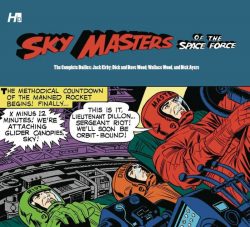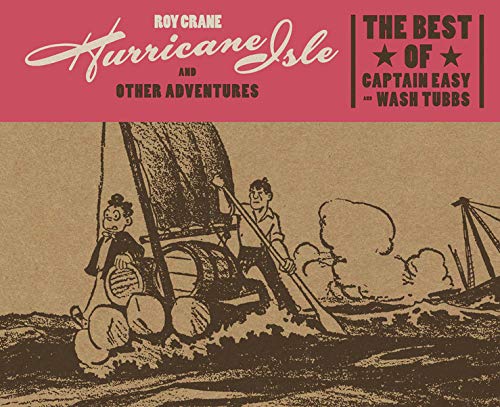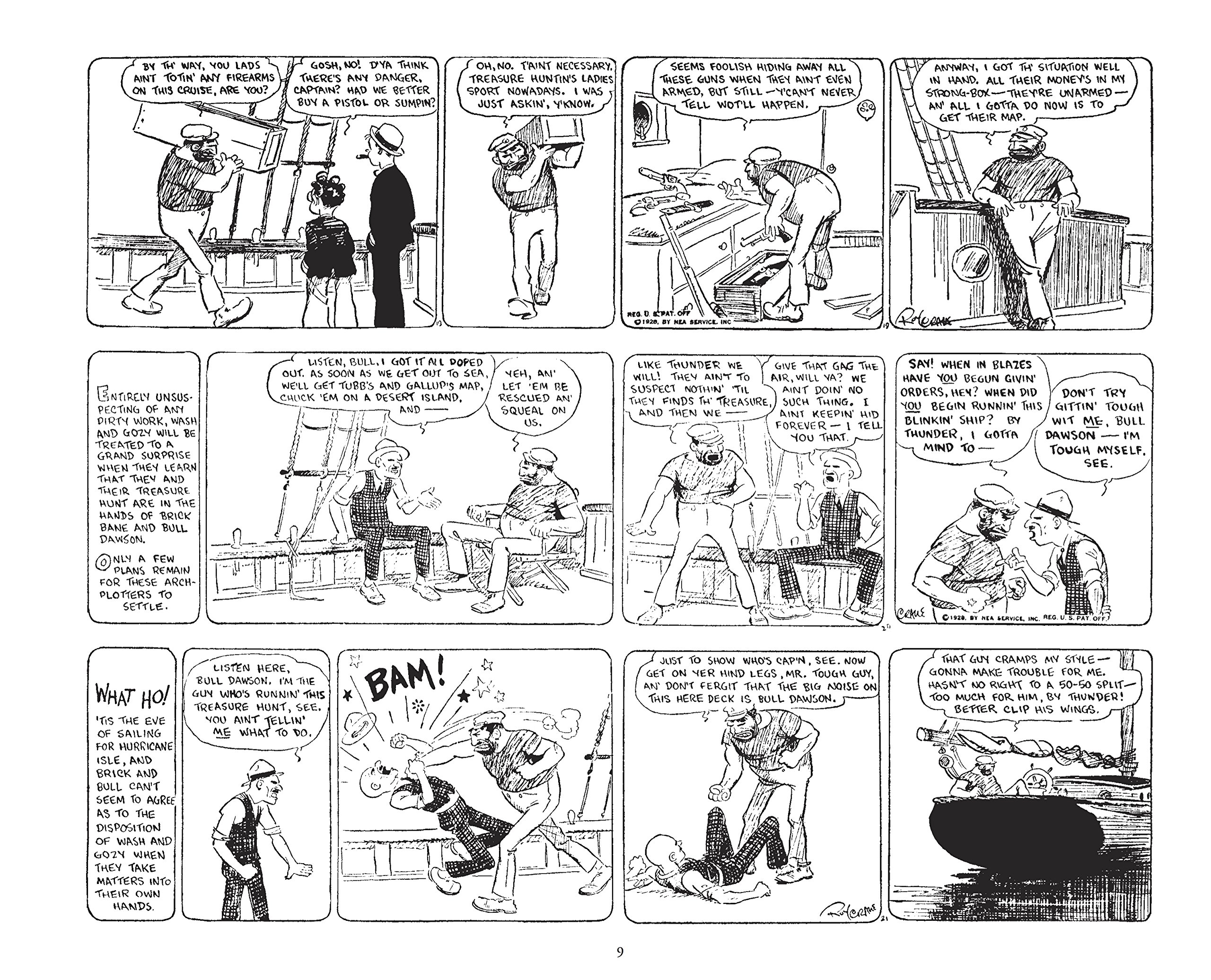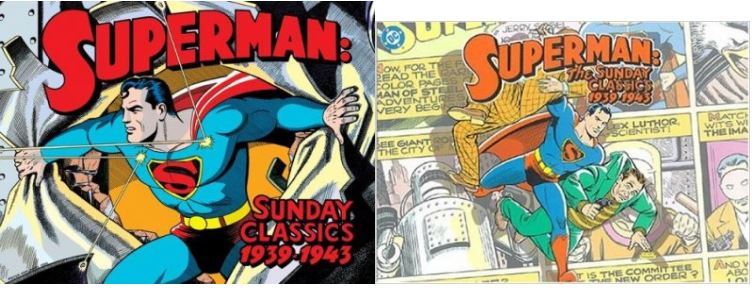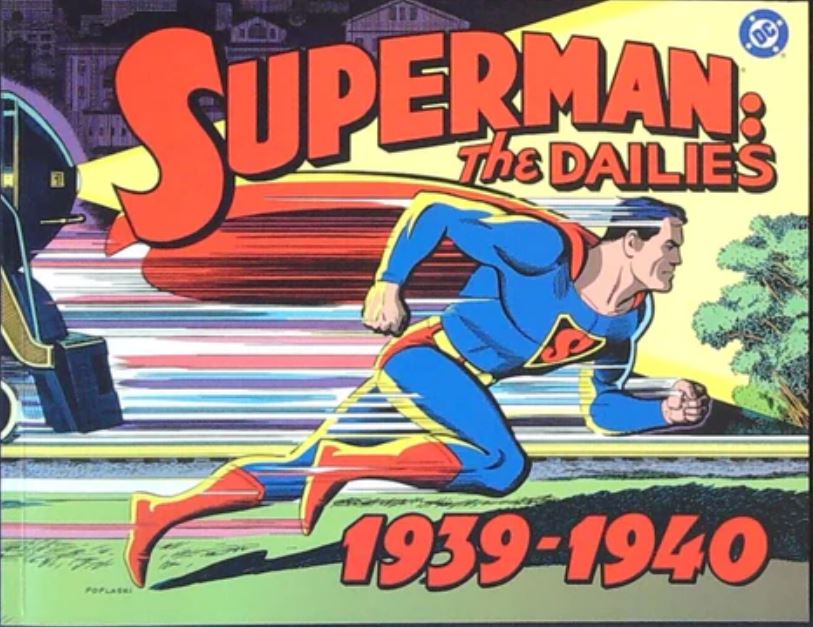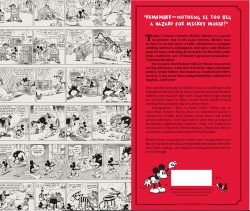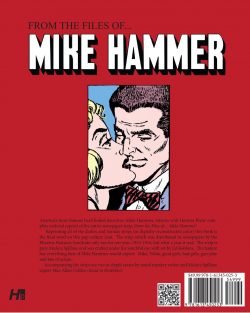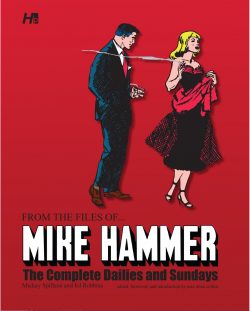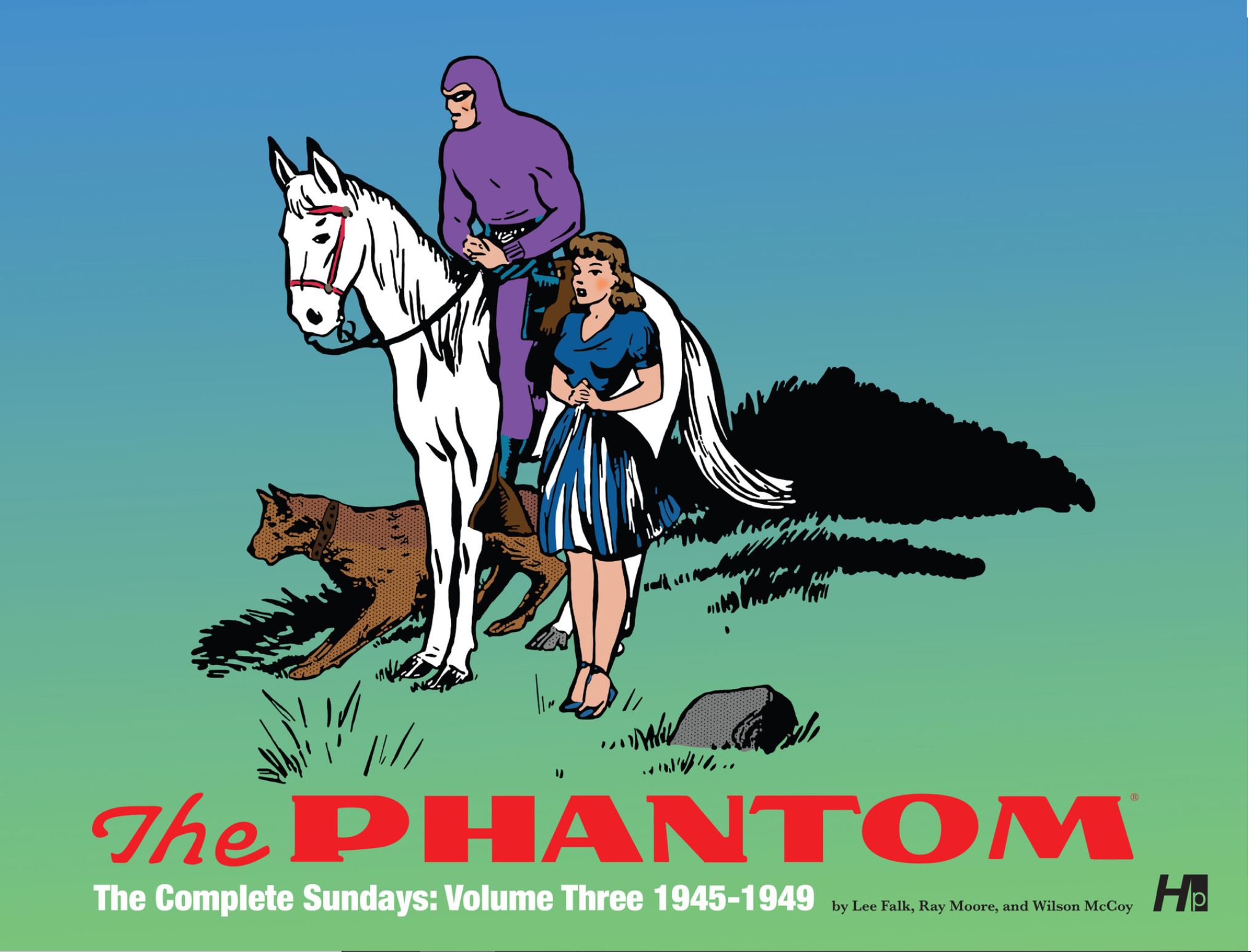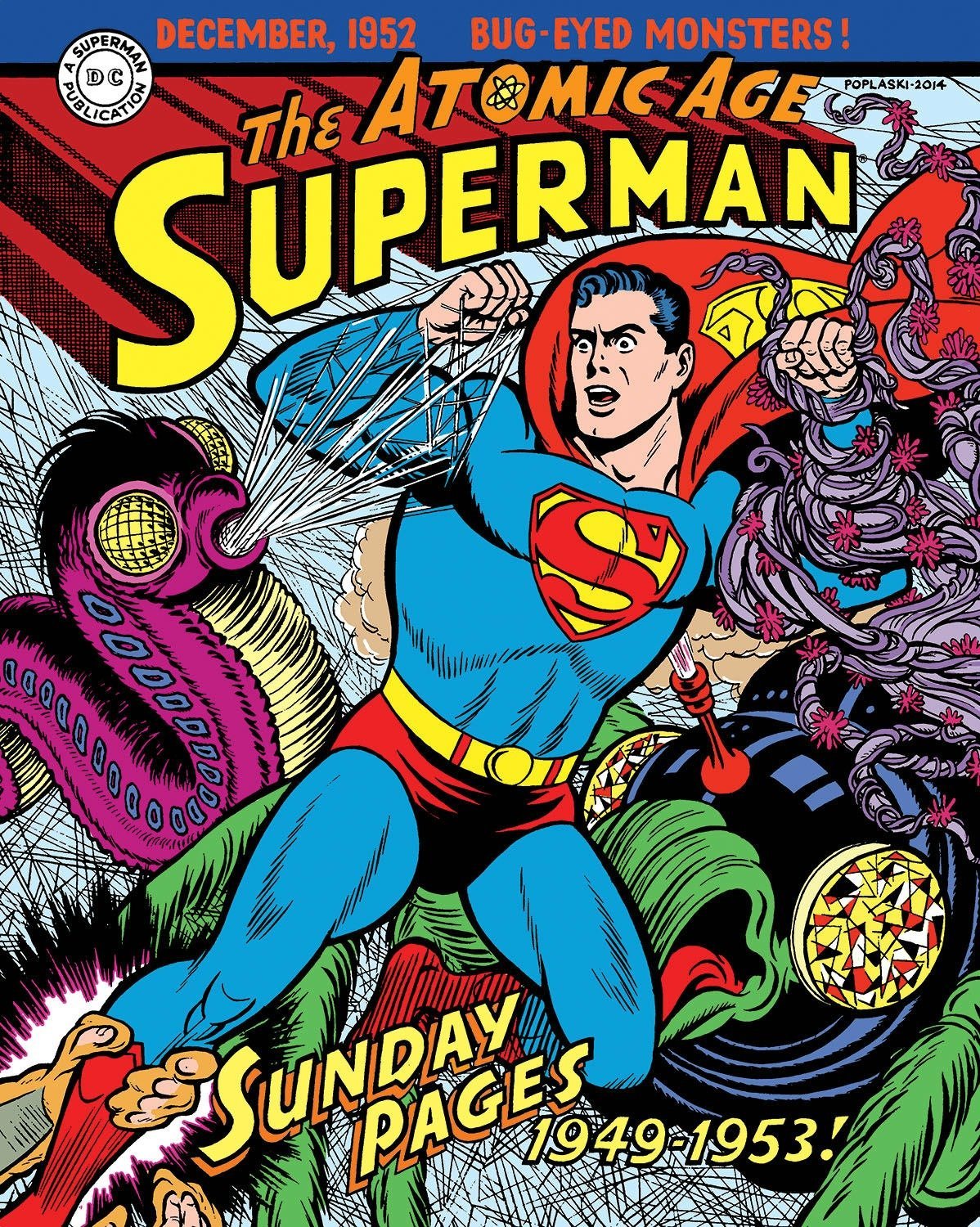
By Alvin Schwartz, Wayne Boring & Stan Kaye (IDW/DC Comics)
ISBN: 978-1-63140-262-3 (HB)
It’s indisputable that the American comic book industry – if it existed at all – would be an utterly unrecognisable thing without Superman. Jerry Siegel & Joe Shuster’s bold and unprecedented invention was fervidly adopted by a desperate and joy-starved generation and quite literally gave birth to a genre if not an actual art form. He was also shamelessly copied and adapted by many inspired writers and artists for numerous publishers, spawning an incomprehensible army of imitators and variations within three years of his summer 1938 debut.
The intoxicating blend of breakneck, breathtaking action and triumphal wish-fulfilment which epitomised the early Man of Steel soon grew to encompass cops-and-robbers crime-busting, socially reforming dramas, science fiction, fantasy, whimsical comedy and, once the war in Europe and the East also engulfed America, patriotic relevance for a host of gods, heroes and monsters, all dedicated to profit through exuberant, eye-popping excess and vigorous dashing derring-do.
In comic book terms Superman was master of the world. Moreover, whilst transforming and dictating the shape of the fledgling funnybook industry, the Man of Tomorrow relentlessly expanded into all areas of the entertainment media. Although we all think of the Cleveland boys’ iconic invention as the epitome and acme of comics creation, the truth is that very soon after his debut in Action Comics #1 the Man of Steel became a fictional multimedia monolith in the same league as Popeye, Tarzan, Sherlock Holmes and Mickey Mouse.
Diehard comics fans regard our purest and most powerful icons in primarily graphic narrative terms, but the likes of Batman, Spider-Man, Black Panther, The Avengers and all their hyperkinetic kind long ago outgrew four-colour origins and are now also fully mythologized modern mass media creatures, instantly familiar across all platforms and age ranges…
Far more people have viewed or heard the Man of Steel than have ever read his comic books. His globally syndicated newspaper strips alone reached untold millions, and by the time his 20th anniversary rolled around at the very start of what we know as the Silver Age of Comics, he had been a thrice-weekly radio serial regular and starred in a series of astounding animated cartoons, as well as two films and a novel by George Lowther.
Superman was a perennial sure-fire success for toy, game, puzzle and apparel manufacturers and had just ended his first smash live-action television serial. In his future were three more shows (Superboy, Lois & Clark and Smallville), a stage musical, a franchise of blockbuster movies and an almost seamless succession of games, bubblegum cards and TV cartoons beginning with The New Adventures of Superman in 1966 and continuing ever since. Even superdog Krypto got in on the small-screen act…
However, during his formative years the small screen was simply an expensive novelty so the Action Ace achieved true mass market fame through a different medium: one not that far removed from his print origins.
Although pretty much a spent force these days, for most of the last century the newspaper comic strip was the Holy Grail all American cartoonists and graphic narrative storytellers aimed for. Syndicated across country – and frequently the planet – they were seen by millions of readers and generally accepted as a more mature and sophisticated form of literature than comic-books. Strips also paid far better and rightly so: some of the most enduring and entertaining characters and concepts of all time were made to lure readers from one particular paper to another and many of them consequently grew to be part of global culture. Flash Gordon, Dick Tracy, Buck Rogers, Charlie Brown and so many more evolved beyond humble, tawdry newsprint to become meta-real: existing in the minds of earthlings from Albuquerque to Zanzibar.
Some still do…
Even so, it was always something of a risky double-edged sword when comic book characters become so popular that they swim against the tide (after all weren’t the funny-books invented just to reprint strips in cheap accessible form?) to became actual mass-entertainment – and often global – syndicated serial strips.
Superman was the first comic book character to make that leap – about six months after he exploded out of Action Comics – but only a few have ever successfully followed. Wonder Woman, Batman (eventually) and groundbreaking teen icon Archie Andrews made the jump in the 1940s with only a handful such as Spider-Man, Howard the Duck and Conan the Barbarian having done so since.
The daily Superman newspaper comic strip launched on 16th January 1939, augmented by a full-colour Sunday page from November 5th of that year. Originally crafted by Siegel & Shuster and their studio (Paul Cassidy, Leo Nowak, Dennis Neville, John Sikela, Ed Dobrotka, Paul J. Lauretta & Wayne Boring), the mammoth task soon required the additional artistic gifts of Jack Burnley and ancillary writers Whitney Ellsworth, Jack Schiff & Alvin Schwartz. The McClure Syndicate feature ran from 1939 until May 1966 and at its peak appeared in over 300 daily and 90 Sunday newspapers: a combined readership surpassing 20 million.
For most of the post-war years, Boring & Stan Kaye illustrated the spectacular Sundays (latterly supplemented by Win Mortimer and Curt Swan). The majority of strips – from 1944 to 1958 – were written by still largely unsung scribe Alvin Schwartz. Born in 1916, Schwartz was an early maestro of comic books, writing Batman, Superman, Captain Marvel and for many other titles and companies. Whilst handling the Superman strip he also freelanced on Wonder Woman and other superheroes as well as DC genre titles such as Tomahawk, Buzzy, A Date with Judy and House of Mystery.
After numerous clashes with new superman Editor Mort Weisinger, Schwartz quit comics for commercial writing: selling novels, essays, documentaries and docudramas for the National Film Board of Canada. He worked miracles in advertising and market research, developing selling techniques like psychographics and typological identification. A member of the advisory committee to the American Association of Advertising Agencies, he died in 2011.
After too many years wallowing in obscurity most of Superman’s newspaper strip exploits are at last available to aficionados and the curious newcomer in tomes such as this compiled under the auspices of the Library of American Comics.
Showcasing Schwartz & artist Wayne Boring in their purest prime, these Sundays (numbered as pages #521 to #698 collectively spanning October 23rd 1949 to March 15th 1953) star a nigh-omnipotent Man of Steel in domestically-framed tales of emotional dilemma and pedestrian criminality rather than a parade of muscle-flexing bombast. Here humour, wit and satire comfortably replace angst and bludgeoning action.
Following an affable appreciation of the creators and the times in Mark Waid’s ‘An Introduction’, ‘A Wayne Boring Gallery’ offers a tantalising selection of contemporaneous Superman and Action Comics covers before weekly wonderment commences in all its vibrant glory. Sadly, the serials are untitled, so you’ll just have to manage with my meagre synopses of individual yarns…
Kicking off is a charming fantasy as the Metropolis Marvel is temporarily stranded in Arthurian Britain after a US government time travel experiment goes awry. Whilst living in the past he befriends and assists court magician Merlin: an old duffer whose conjuring tricks aren’t fooling anyone anymore…
The first new tale of 1950 begins on February 12th, detailing how swindler Joseph Porter cons the Man of Steel into taking his place and clearing up his problems with cops and numerous gulled victims. This includes a hilarious spoofing sequence as the hero plays un-matchmaker to a scandalously-affianced hillbilly ingenue that will delight fans of Li’l Abner…
The extended saga opening on May 28th offers another human-interest drama given a super-powered spin: two aging robber barons recalling their regulation-free heydays before embarking on a ruthless wager to see who will get “anything they wish for” first. The only limitations imposed are their imaginations and financial resources. Before long Superman is hard-pressed to keep collateral casualties to a minimum…
One of the few antagonists to transfer from funnybooks to the Funny pages was fifth dimensional prankster Mr. Mxyztplk who popped back to our third dimension and took instant umbrage to an arrogant Earth educator. Dr. Flipendale had the temerity to declare the imp a mass delusion and refused to believe or even acknowledge the escalating chaos his stark pronouncements triggered…
Strip #573 (October 22nd) offers a different take on the classic secret identity crisis as Clark is exposed as an invulnerable man to all of Metropolis. Although gangsters are convinced, Lois Lane is not, claiming the underworld is perpetrating a frame-up…
That yarn takes us to years’ end and 1951 opens on January 7th with a tale of suspicion and injustice as Clark heads back to childhood hometown Smallville to celebrate Superboy Week and encounters a young man nursing an ancient grudge. When the poison pen/rumour campaign looks set to spoil festivities, the hero’s investigations uncover a betrayed child, a framed, murdered father and nefarious clandestine misdeeds carried out by corporate rogues in the Boy of Steel’s name…
Another identity crisis bedevils Clark beginning on April 1st. A killer’s case of mistaken identity seemingly exposes the reporter as super-strong and bulletproof. Surely, he must be the indomitable Man of Steel in disguise? Not according to Professor Pinberry who believes our hapless scribe has been accidentally exposed to his new superpower ray machine, Clark is happy to grasp at the fortuitous alibi but trouble mounts after the public demands to see the machine in action again and the city’s biggest mobster goes after the gadget to make himself Superman’s equal.
Strip #609 commenced on July 1st as aged duffer Salem Cooley comes to Metropolis and enjoys the most miraculous winning streak in history. Even Superman’s astounding powers can’t keep up with the string of happy circumstances, fortuitously profitable accidents and close shaves. Everybody wants to be the old coot’s pal, so who then is behind the constant assassination attempts on superstitious Salem… and what reward could possibly tempt anyone to challenge the luckiest man alive?
September 9th saw Superman agree to write Daily Planet articles about some of his previous exploits to benefit crime prevention charities. However, when capers he cites are restaged by mysterious malefactors, the city soon turns against the Man of Tomorrow and it takes all his super-wits to uncover the mastermind behind it all and quash one of the boldest crimes in the city’s history…
To lure a crime boss out, the Action Ace agrees to be absent Metropolis for a few weeks in the next adventure (running November 18th 1951 – January 13th 1952). However, when a poverty-struck boy succumbs to disease and depression, the Man of Might opts to return undercover, inspiring the kid’s recovery by granting wishes made on a “magic wand”. The task becomes increasingly difficult after crooks get hold of the stick and the invisible hero has to play along to sustain little Teddy’s recuperation…
From January 20th, Superman plays guardian angel to former wastrel and drunken playboy Reggie de Peyster who swears he’s a reformed character. Nobody but Superman realises the trust fund brat is sincere and all the appalling, shameful scandals he’s currently implicated in are being manufactured to cut him out of a vast inheritance…
Lois Lane takes centre stage from April 6th as, after months of being sidelined, the daring reporter quits her job to find a career offering some real excitement. She’s soon assistant to private detective Mike Crain: catching crooks and bodyguarding glamourous stars, but the work seems dull and pedestrian. Of course, Lois is utterly oblivious to the fact Superman is secretly intervening: patriarchal efforts to get her back where she belongs. Ah, different times, eh?
When maverick Hollywood producer/director Hans Bower arrives in Metropolis, (from June 29th he promptly declares Clark to be his latest mega-sensational super-star. A force of nature unable to take no for an answer, Hans soon has the bewildered reporter helming his next box office blockbuster. As shooting progresses, however, Superman uncovers a covert agenda and shocking secret behind the mogul’s extraordinary actions.
Uncanny crime is the order of the day from September 21st when bizarre illusions plague Metropolis and scientist Dr. Wagonrod accuses Superman of perpetrating hoaxes and staging crises due to an undiagnosed split personality. The truth is far more devious than that…
Concluding this first Atomic Age collection, November 30th 1952 to March 15th 1953 found readers avidly watching the skies when an alien capsule fell to Earth and disgorged a succession of alien bio-weapons to test humanity. Superman was hard-pressed to defeat the army of bizarre beasts but did have one immeasurable advantage: the sage advice and input of life-long science fiction fan Sedgwick Ripple…
The Atomic Age Superman: – Sunday Pages 1949-1953! was the first of three huge (312 x 245 mm), lavish, high-end hardback collections starring the Man of Steel and a welcome addition to the superb commemorative series of Library of American Comics which has preserved and re-presented in luxurious splendour such landmark strips as Lil Abner, Tarzan, Rip Kirby, Polly and her Pals and many of the abovementioned cartoon icons.
It’s an unimaginable joy to see these neglected Superman stories again, offering a far more measured, domesticated and comforting side of one of America’s most unique contributions to world culture. It’s also a pure delight to see some of the most engaging yesterdays of the Man of Tomorrow. Join me and see for yourself and agitate for the entire library to find time to release digital editions…
© 2015 DC Comics. All rights reserved. SUPERMAN and all related characters and elements are trademarks of DC Comics.

